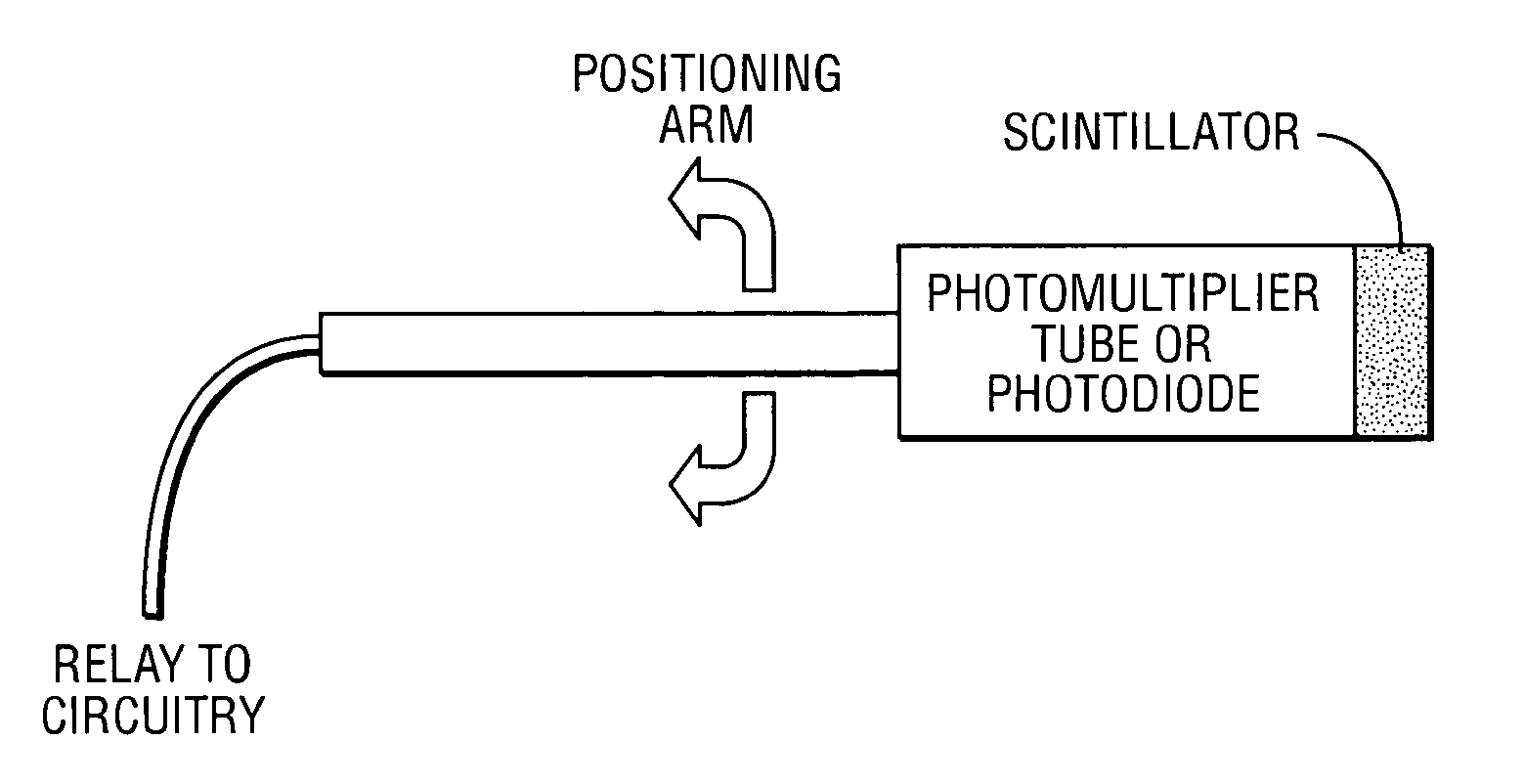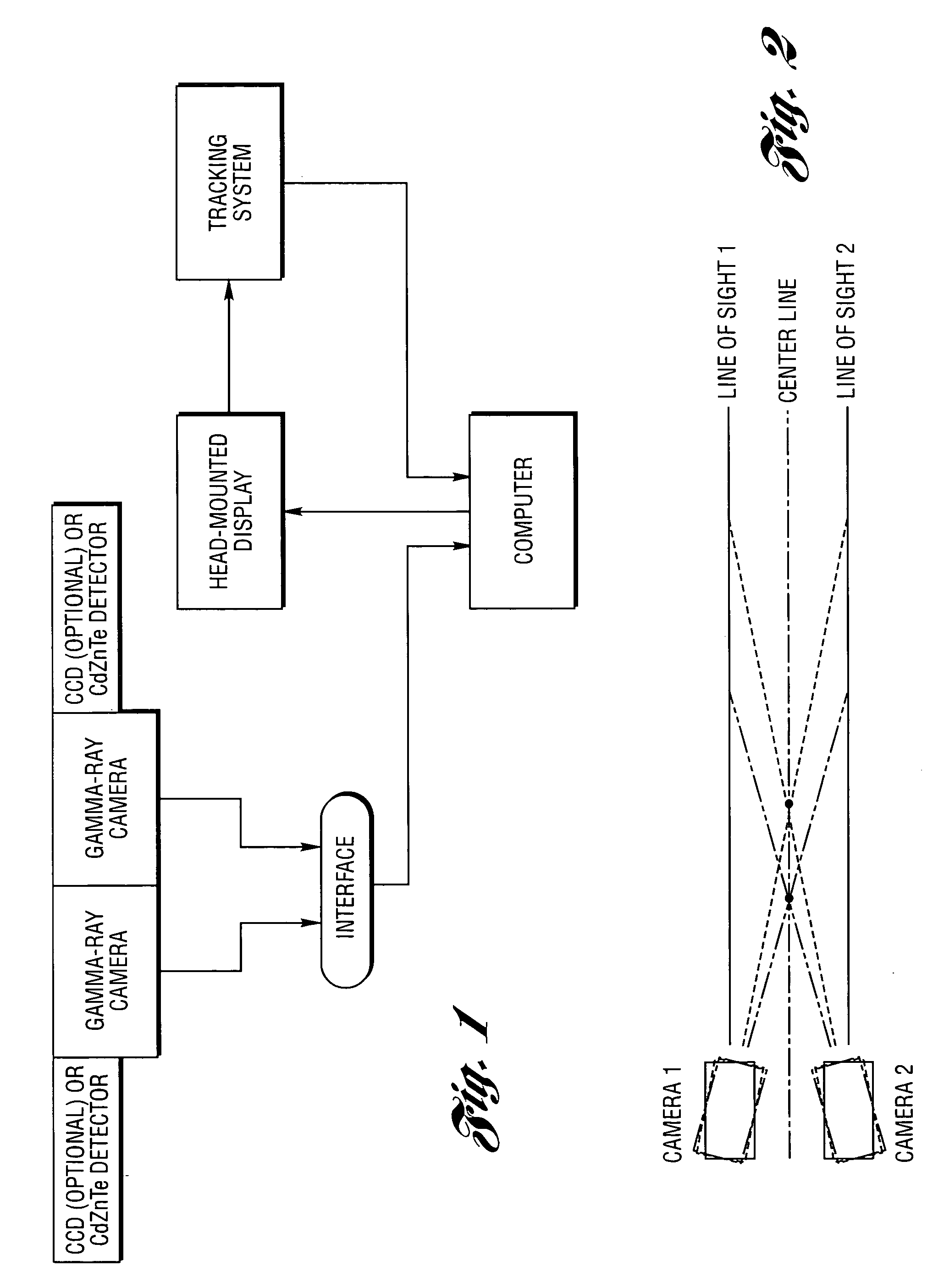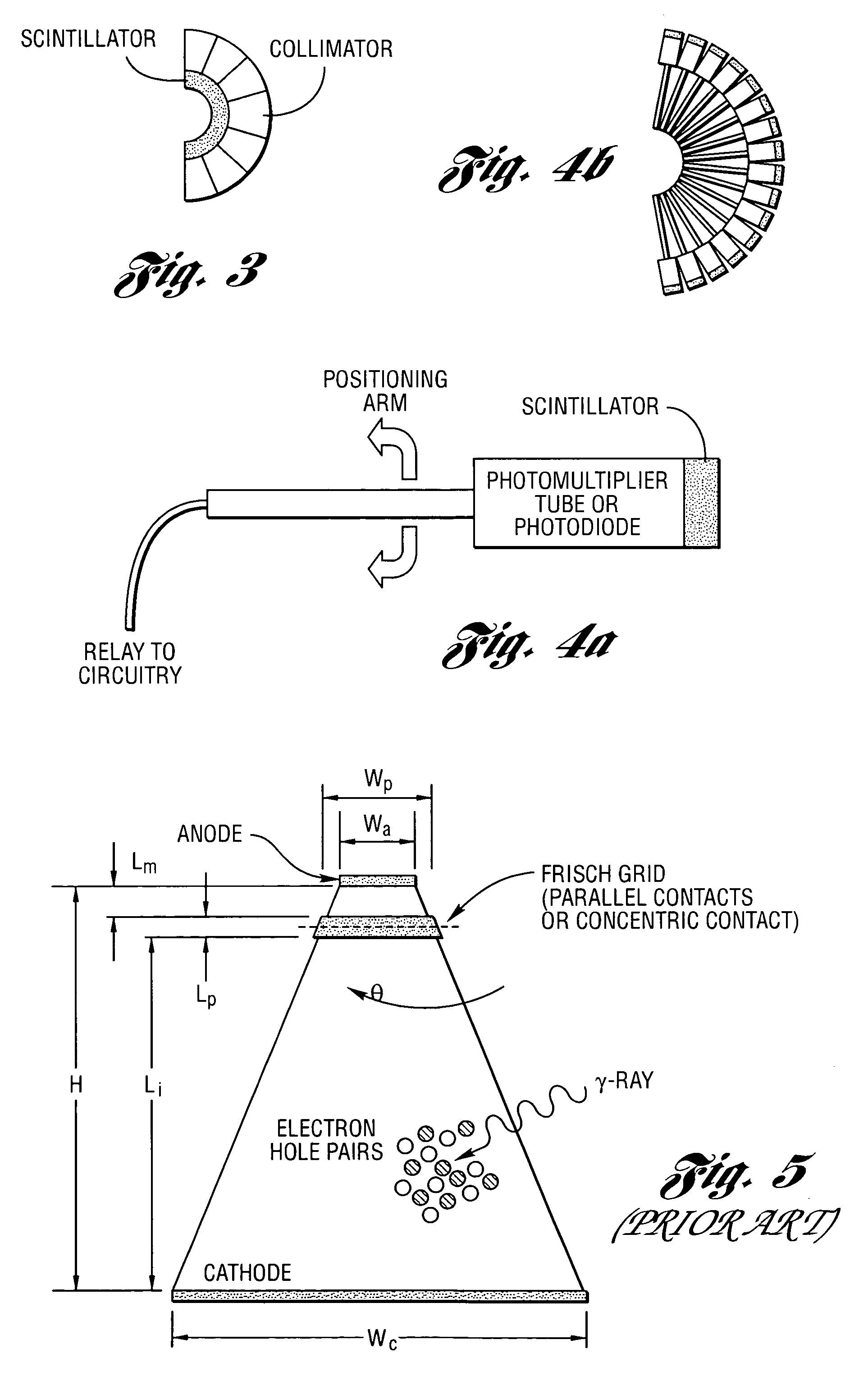Method and system for high-speed, 3D imaging of optically-invisible radiation and detector and array of such detectors for use therein
a technology of optically invisible radiation and high-speed imaging, which is applied in the direction of x/gamma/cosmic radiation measurement, radioation controlled devices, instruments, etc., can solve the problems of compounding hazard, invisible hazard, and radiation invisible to the human eye, so as to reduce the exposure of workers to radiation, the effect of strong applications and significantly faster cleaning of contamination
- Summary
- Abstract
- Description
- Claims
- Application Information
AI Technical Summary
Benefits of technology
Problems solved by technology
Method used
Image
Examples
Embodiment Construction
The method and system of the present invention solves the broad problem of detecting physical things, such as ionizing and non-ionizing radiation, that are not able to be easily and directly perceived by human vision and presenting the radiation using methods of supplementing optical input data with other information such as by augmented reality (AR) and using some visualization method for displaying these data as shown in FIG. 1. This invention may combine the principles of computerized tomography (in particular, limited angle emission tomography, simplified by the lack of significant attenuation of transmitted photons in air) or other alternatives such as the techniques of computer vision to produce data to be viewed in 3D using AR.
The computer of FIG. 1 may be programmed to perform tomographic algorithms which are able to reconstruct 3D images rapidly, and are accompanied by an additional algorithm or hardware device to derive stereoscopic data from the resulting 3D maps. Thes...
PUM
 Login to View More
Login to View More Abstract
Description
Claims
Application Information
 Login to View More
Login to View More - R&D
- Intellectual Property
- Life Sciences
- Materials
- Tech Scout
- Unparalleled Data Quality
- Higher Quality Content
- 60% Fewer Hallucinations
Browse by: Latest US Patents, China's latest patents, Technical Efficacy Thesaurus, Application Domain, Technology Topic, Popular Technical Reports.
© 2025 PatSnap. All rights reserved.Legal|Privacy policy|Modern Slavery Act Transparency Statement|Sitemap|About US| Contact US: help@patsnap.com



